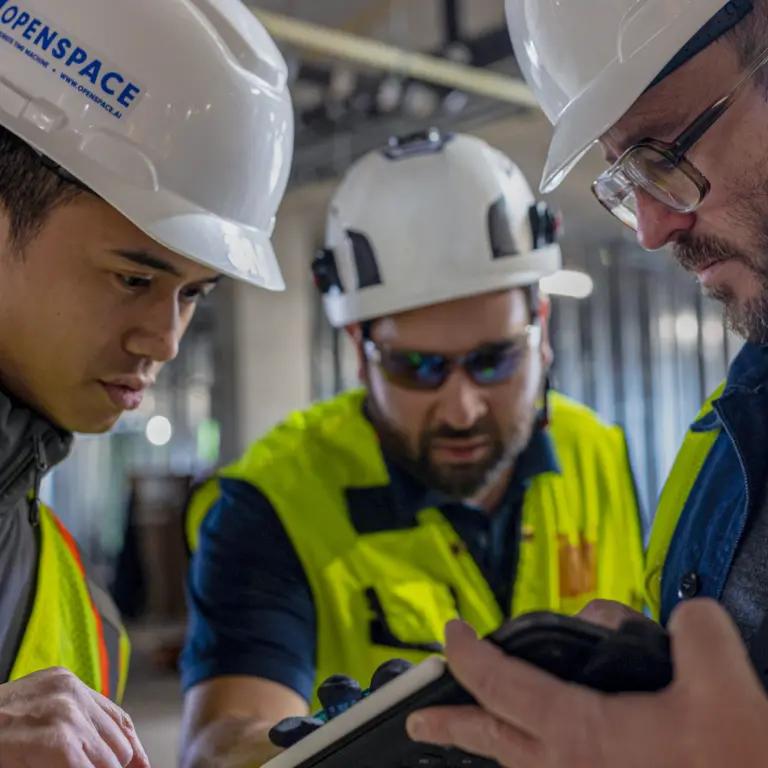OpenSpace Spatial AI combines spatial computing and generative AI
Computer vision: AI that makes sense of digital images
Computer vision is a field of AI that trains computers to interpret and understand digital images and videos. It’s used in self-driving cars, industrial automation, and robotics, to name a few. OpenSpace’s Spatial AI relies on computer vision to automatically align images into a single integrated scene, recognize and label key features, and map them to floor plans, for a rich, visual understanding of the captured environment.
3D reconstruction: creating a 3D point cloud
Our Spatial AI uses 3D reconstruction to locate features in space and recreate 3D environments. It compares features in two images, then computes an estimate of camera position that best aligns those features. This process is repeated thousands of times across a full OpenSpace 360° video capture, creating a 3D point cloud. The point cloud ties a feature in an image to a 3D location in space.
Machine learning: making the AI smarter
Machine learning algorithms create a mathematical model based on training data to predict future results without being explicitly programmed to perform the task. Our AI uses each capture and walk track as a training dataset. Every time you walk the site, the OpenSpace Spatial AI engine learns a bit more about the 3D environment you’re in, aligning and mapping images faster and more accurately.
SLAM: aligning images
Simultaneous Location and Mapping (SLAM) is a technique to construct a map of an unknown environment while simultaneously moving through it. SLAM is one of the core algorithms used for self-driving car navigation. OpenSpace uses image-based SLAM to estimate the path of the walker on a floor plan, with algorithms constantly aligning sequential data to estimate position and path.
Generative AI engineered for construction
Generative AI is a type of AI that can create new content, such as text, images, music, and more. These large language models are used to power a class of AI assistants or co-pilots that have become popularized by the media and by users of chatbots like ChatGPT. Generative AI works by taking a whole bunch of data, usually from the internet, and crunches through that data, learning how to do specific tasks. OpenSpace is applying large language models to help interpret and provide insight from reality capture data.
Interested in learning more?
See OpenSpace 360° reality capture in action.

“Lots of companies claim to be automated, but this really is. I’m usually really skeptical of people who come out with construction tech, because a lot of us are set in our ways. But then they showed me the software and it blew me away."
Tim Crawford, Superintendent

Simple-to-use tools built with complex technology

Turning reality data into intelligence
OpenSpace collects data from 360° images, mobile phone photos, drone imagery, and laser scans across your projects. Our Spatial AI engine turns that reality data into insights to help you quickly find answers and make better decisions.
First fully automated reality capture system
With OpenSpace Capture, our Spatial AI engine stitches images together and pins them to your floor plan, creating a comprehensive and shared visual record of your jobsite.

Waypoint virtual summit—beyond reality capture
OpenSpace is now a Visual Intelligence Platform. Clarity for better decisions, faster.
Beyond the technology
Academy
Continuous learning with free, on-demand courses that include easy-to-follow instructions plus tips and tricks.
Support
We take a 360° approach to support with 24×6 support lines and advice and answers in our online support portal.
ROI
Access resources for tips on evaluating how reality capture can help you build faster and with less risk.




